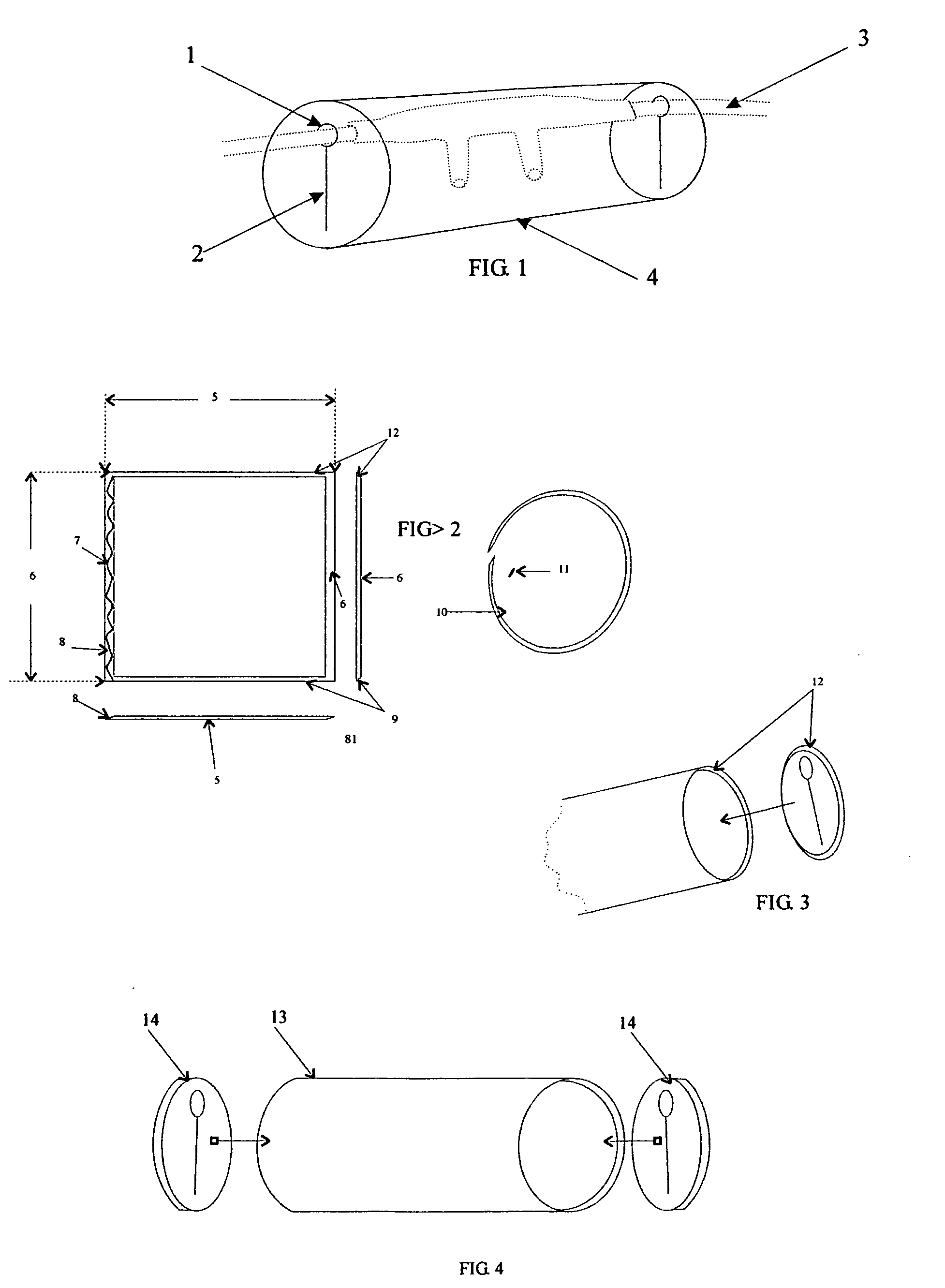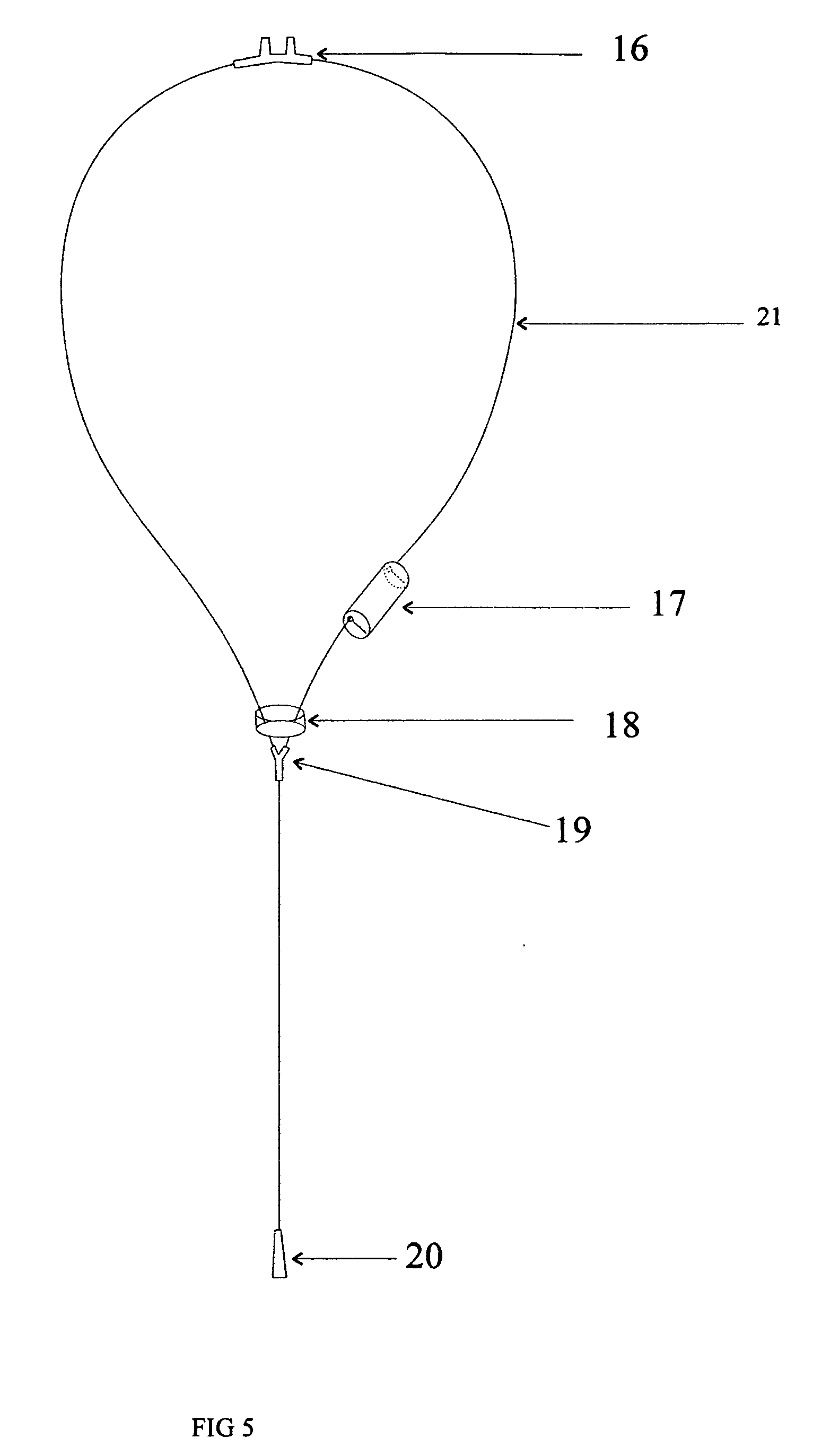Cannula cover
a cannula and cover technology, applied in the field of cannula covers, can solve the problems of irritation on the patient's neck, insufficient softness and flexibility, and still fell short of the patient's protection goal, so as to shorten the hospital stay and reduce pain and suffering
- Summary
- Abstract
- Description
- Claims
- Application Information
AI Technical Summary
Benefits of technology
Problems solved by technology
Method used
Image
Examples
Embodiment Construction
[0015]The innovative Cannula Cover is a sterile encasement made to fit on the tubing of current various sized nasal cannulas found on the market shelves. It is designed to be comfortable to the O2 patient, voiding prolonged rubbing of the skin, as allowed in FIG. 5 #17 the Cannula Cover can be slid up and down the subsidiary oxygen supply tubing (FIG. 5 #21), allowing it to not be kept in any one position, which could cause irritation, inflamation and or ulceration. FIG. 1 #'s 1-3 show the Cannula Cover will be measured to fit each different manufactures product (FIG. 1 #3: U.S. Pat. No. 4,106,505, Salter Aug. 15, 1978, being represented as an example) with close tolerances allowing the encasement (FIG. 1 #4) to slide over the subsidiary oxygen supply tubing (FIG. 5 #21) connecting the opposing ends of the nasal cannula. The Cannula Cover will be manufactured in a controlled sanitary environment. The Cannula Cover is designed to be manufactured from either flat stock medical grade p...
PUM
 Login to View More
Login to View More Abstract
Description
Claims
Application Information
 Login to View More
Login to View More - R&D
- Intellectual Property
- Life Sciences
- Materials
- Tech Scout
- Unparalleled Data Quality
- Higher Quality Content
- 60% Fewer Hallucinations
Browse by: Latest US Patents, China's latest patents, Technical Efficacy Thesaurus, Application Domain, Technology Topic, Popular Technical Reports.
© 2025 PatSnap. All rights reserved.Legal|Privacy policy|Modern Slavery Act Transparency Statement|Sitemap|About US| Contact US: help@patsnap.com



